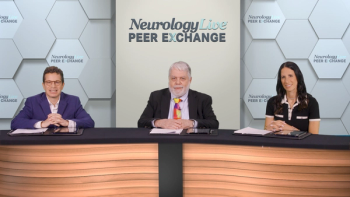
Is Thrombectomy Equally Safe in Pediatric Stroke?
New study results suggest that thrombectomy may have similar rates of favorable neurologic outcomes and a comparable safety profile in both pediatric and adult patients with stroke.
Peter B. Sporns, MD, MHBA
New study results suggest that thrombectomy has a similar safety profile to that in adult patients with stroke when utilized for pediatric patients, with the majority of pediatric patients studied achieving favorable neurologic outcomes.1
The Save ChildS multiple-cohort study retrospectively assessed endovascular treatment in 73 children, with 87% of those achieving successful recanalization in a real-world setting. Data included results of thrombectomies from January 1, 2000, to December 31, 2018, at 27 stroke centers in the US and Europe.
Compared to the HERMES meta-analysis of clinical trials of adults with stroke (2.79%; 95% CI, 0.42—6.66), the proportion of patients with symptomatic intracerebral hemorrhage events was 1.42% lower in the Save ChildS study (1.37%; 95% CI, 0.03–7.40). The heterogeneity measure I2 for symptomatic intracerebral hemorrhage across the 7 HERMES trials was 84% and decreased to 82% after adding Save ChildS data. The HERMES meta-analysis included the ESCAPE, EXTEND-IA, MR CLEAN, PISTE, REVASCAT, SWIFT PRIME, and THRACE studies.
Study author Peter B. Sporns, MD, MHBA, of the Institute of Clinical Radiology at the University Hospital of Muenster, and colleagues wrote that “this study appears to support the level of evidence in favor of endovascular recanalization in children with acute, large-vessel occlusion; a higher strength of recommendation may contribute to clinical outcome in children affected by arterial ischemic stroke.”
“This study may support clinicians’ practice of off-label thrombectomy in childhood stroke in the absence of high-level evidence,” Sporns and colleagues concluded.
The median age of patients included was 11.3 years (interquartile range [IQR], 7 to 15), of which 51% (n = 37) were boys. In total, 86% (n = 63) and 14% (n = 10) of patients received treatment for anterior circulation occlusion and posterior circulation occlusion, respectively. Overall, 22% (n = 16) of patients received concomitant intravenous thrombolysis. Six patients (8%) had a focal cerebral arteriopathy, 1 patient (1%) had a bilateral cerebral arteriopathy, 7 patients (10%) were classified as having aortic/cervical arteriopathy, and 32 patients (44%) were classified as having a cardioembolic cause.
Neurologic outcomes, assessed via the Pediatric National Institutes of Health Stroke Scale (PedNIHSS), were found to improve from a median of 14 (IQR, 9.2­—20) at admission to 5 (IQR, 2.2–8) after 24 hours. At day 7, PedNIHSS score dropped to 4 (IQR, 2–7). Sporns and colleagues wrote that the PedNIHSS score improvement observed in Save ChildS compared to the HERMES meta-analysis “suggested that short-term neurologic improvement of our study population showed a similar pattern as observed in the adult trial.”
Additionally, modified Rankin score (mRS) was used to assess secondary outcomes, which was 1.0 (IQR, 0.2-2.0) at discharge, improving slightly to 1 (IQR, 0—1.6) at 6 months and 1 (IQR, 0–1) at 2 years. The comparison of mRS at discharge and 180 days to mRS at 90 days in the HERMES meta-analysis suggested a lower proportion of poor outcomes in the Save ChildS study population.
When the analysis was stratified by age, the mRS score at discharge was notably higher in those aged 0 to 6 years (3.5; IQR, 1.0-5.1) compared to the entire cohort including all age groups (1.0; IQR, 0.2-2.0).
In total, a single patient (1%) developed a postinterventional bleeding complication and 4 patients (5%) developed transient peri-interventional vasospasm, which resolved after nimodipine administration in all cases. Postinterventional complications included 1 patient (1%) with symptomatic intracerebral hemorrhage and 3 patients (4%) with malignant infarction followed by decompressive hemicraniectomy.
“This lack of complications is particularly important because the causes of stroke are considerably different in children so that results of adult trials cannot be extrapolated to children with strokes in general,” Sporns and coauthors wrote. “Children more often have strokes due to an underlying arteriopathy, especially of inflammatory origin, which might increase the risk of bleeding complications during endovascular procedures owing to vessel fragility.”
In an accompanying editorial, Christine Fox, MD, MS, and Nomazulu Dlamini, MBBS, MSc, PhD, explained that this study is one of many which is essential to the growing understanding of pediatric stroke management and treatment. Although, they noted that due to the heterogeneity of stroke recovery with varying brain development stages “we should be cautious about the interpretation of long-term outcome measures in the Save ChildS study.”2
REFERENCES
1. Sporns PB, Sträter R, Minnerup J, et al. Feasibility, Safety, and Outcome of Endovascular Recanalization in Childhood Stroke: The Save ChildS Study. JAMA Neurol. Published online October 14, 2019. doi:10.1001/jamaneurol.2019.3403
2. Fox C, Dlamini N. Endovascular Therapy for Childhood Stroke—Working Together to Reach Prime Time. JAMA Neurol. Published online October 14, 2019. doi:10.1001/jamaneurol.2019.3412
Newsletter
Keep your finger on the pulse of neurology—subscribe to NeurologyLive for expert interviews, new data, and breakthrough treatment updates.








































